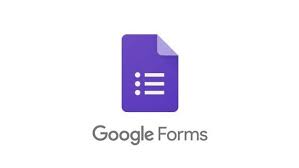English for Maritime in Vocational High School Context; a Needs Analysis
DOI:
https://doi.org/10.31597/sl.v3i2.547Keywords:
ESP, English for Maritime, Needs Analysis, Materials DevelopmentAbstract
English for Specific Purposes (ESP) is an English learning that incorporates elements of the learner's specific needs and the context of the work environment. ESP for maritime or shipping is still not developed much in practice, especially in research. In Bangkalan city itself, there is a Shipping Vocational Middle School, but the development of supporting material for Maritime English is not optimal. This study aims to develop specific teaching materials to prepare maritime or sailing Vocational High School students to be able to equip themselves with work communication competencies in English. The R & D model used was the Language Development Program applied by Yalden (1987) comprising identifying the current situation and problems, referring it to the theory, obtaining needs analysis information, focus group discussion, writing manuscript, expert judgment, revision, tryout, and validation. It has been found that the language needs needed by seafarers are mostly in the context of coordination language onboard with the emphasis on speaking and reading, making notional-functional expressions are required to include in the materials. The results of the needs analysis are going to be used to next step, i.e. materials development.
References
Baskturkmen, H. (2010). Developing Courses in English for Specific Purposes. New York : PALGRAVE MACMILLAN.
Bhatia, V. K., & Nodoushan, M. S. (2015). Genre analysis: The state of the art. International Journal of Language Studies, 9(2), 121-130.
Dudley-Evans, T., & St John, M. (1998). Developments in English for Specific Purposes. Cambridge: Cambridge University Press.
Harmer, J. (2007). How to teach English. United Kingdom: Pearson Education
Limited.
Johns, A. M. (2013). ESP and Language Skills. Dalam B. Paltridge, & S. Starfield (Penyunt.), The Handbook of English for Specific Purposes (hal. 31-34). Oxford: John Wiley & Sons, Inc.
Johns, A. M., & Nodoushan, M. A. (2015). English for Specific Purposes: The State of the Art. International Journal of Language Studies, 9(2), 113-120.
Jurusan Pelayaran SMK . (2017, April 8). Accessed from Media Pendidikan Kejuruan | Vocational Education : http://www.kejuruan.net/2017/04/jurusan-pelayaran-smk.html
Kourieos, S. (2015). Investigating Maritime students’ academic and professional language skills: A Needs Analysis. English for Specific Purposes World(47), 1-25.
Lambert, C. (2010). A task-based needs analysis: Putting principles into Practice. Language Teaching Research, 14(1), 99-112.
Long, H. M. (2005). Methodologial Issues in Learner Needs Analysis. Dalam H. M. Long, Second Language Needs Analysis (hal. 19-76). Cambridge: Cambridge University Press.
Paltridge, B., & Starfield, S. (2013). Areas of ESP Research . Dalam B. Paltridge, & S. Starfield, The Handbook of English for Specific Purposes, First Edition. (hal. 133-135). Oxford : John Wiley & Sons, Inc.
Sudarmo , L., Wuladari , H., Safitri, M., & Kiswara , F. (2016). English for Maritime. Bandar Lampung: The Fourth International Conference on Education and Language (4th ICEL) 2016 Universitas Bandar Lampung.
Yalden, J. (1987). The Communicative Syllabus, Evaluation, Design and Implementation. London: Prentice-Hall International (UK) Ltd.
Downloads
Published
How to Cite
Issue
Section
License
1. Copyright of this journal is possession of Editorial Board and Journal Manager, by the knowledge of author, whilst the moral right of the publication belongs to the author.
2. Legal formal aspect of journal publication accessibility refers to Creative Commons Atribution-ShareAlike (CC BY-SA), implies that this license lets others remix, adapt, and build upon your work even for commercial purposes, as long as they credit you and license their new creations under the identical terms. This license is often compared to “copyleft” free and open source software licenses.
3. Every publications (printed/electronic) are open access for educational purposes, research, and library. Other that the aims mentioned above, editorial board is not responsible for copyright violation















